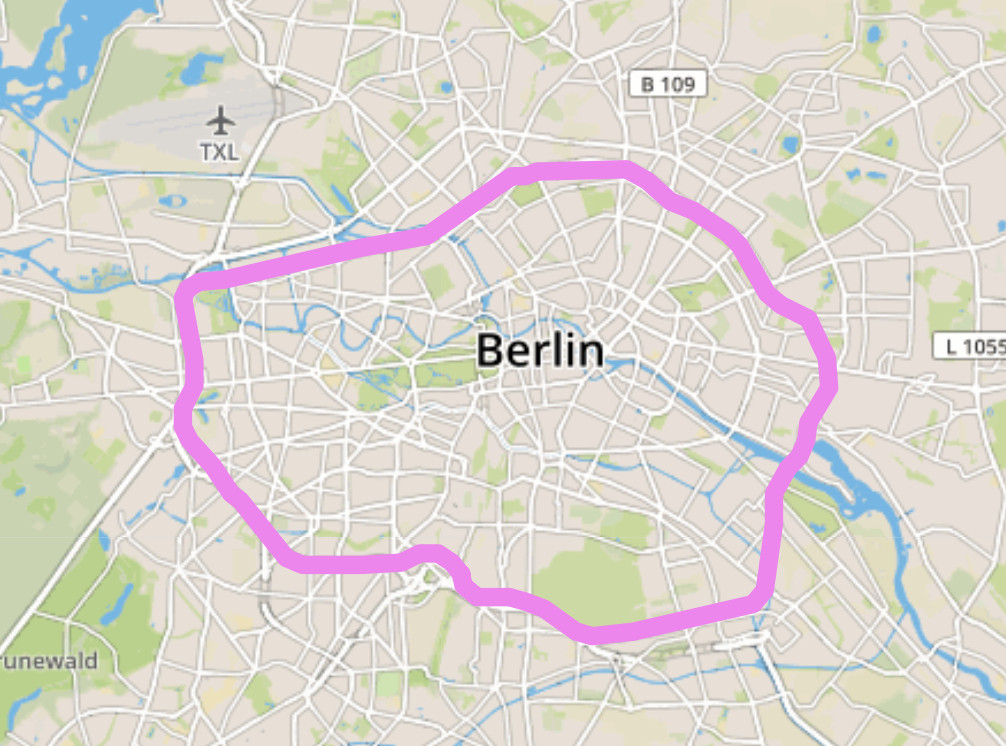Info2: Exercise 10: Getting from A to B

S-Bahn Ring generated with https://github.com/bkleinen/bvg-graph based on OpenStreetMap
Pre-Lab
P1. Define an interface data type for a weighted graph. What methods does it need? What are the signatures?
P2. Read on Depth-First-Search and Dijkstra Algorithm to compute the shortest and cheapest path in a given graph. We’ve covered them in class, also.
P3. Your algorithm will probably need an adjacency matrix oder an adjacency list as its data structure. Think about how you would implement such a structure, if you only had linked lists available. What methods will you need for your data structure?
Assignment
Read through everything first and think about who will do what. Our goal is to write a program to determine how to get from A to B, either fast or cheap. We first need some test data.
- Design and implement a data type WeightedGraph that uses either an adjacency list or an adjacency matrix.
- While one partner is doing this, the other one should write a class that reads a graph from a file. See notes on the file format and the example file below!
- Now write a method that will take a graph and two vertices and find the shortest path between the vertices. Make a method to print out the path in a readable format.
- Meanwhile, your partner writes a method that takes a graph, picks two vertices at random, and finds the cheapest path between the two.
- Starting from S Schöneweide Bhf (Berlin) compute the shortest travel times to the 4 Stations below.
Your Dijkstra implementations should yield the following travel times:
(Which is a plausible result given that the Algorithm/Graph doesn’t consider Time spent in Stations.)
For the bored
- Use your data structure to print out all the vertices n steps from a given vertex.
- List the travel times to all stations from S Schöneweide.
- Are there multiple minimal paths? Print them all (this is very tricky!).
Graph Example and Test Data
Test Data
graph1.txt contains a small example graph to test both algorithms. For the Dijkstra Algorithm, result1.txt contains the cheapest path costs if you start at vertex 1.
BVG U+S Bahn
The graph data in bvg.txt contains a simple extract of the Berlin U+S Map and has the following format:
<from-vertex> <to-vertex2>,<weight2> <to-vertex2>,<weight2>
That is, each line represents a vertex with all its outgoing edges, e.g.
060049202852 060049201862,90 060066101852,108
means that there is an edge from 060049202852 to 060049201862 with weight 90, that is, the travel time from
060049202852, S Sundgauer Str. (Berlin) to 060049201862, S Zehlendorf (Berlin) is 90 sec.
You find the station names in stations.txt
The graph data was extracted from the GTFS-Data provided at https://www.vbb.de/de/article/fahrplan/webservices/datensaetze/1186967.html using the rails app https://github.com/bkleinen/bvg-graph
Lab Report / What to turn in
All info on the lab reports can be found on the Labs page.
Also answer the following questions in your report:
- Ex. 1: How are you going to store the weights?
- Ex. 3: What class will these methods belong to?
- Do your implementations return the correct results?
